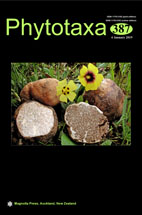Abstract
Acanthophyllum, with ca. 90 spiny cushion-forming species, is one of the largest genera of Caryophyllaceae. Although taxonomic utility of seed morphology has already been highlighted in different genera of Caryophyllaceae, the systematic value of seed characters in Acanthophyllum has not been adequately addressed. In order to evaluate the application of seed morphology in infrageneric classification of Acanthophyllum, we surveyed seed characters in the five Iranian sections of Acanthophyllum. Seed morphology of 32 accessions of Acanthophyllum representing 21 species and four sections were investigated using scanning electron microscopy. Seed morphological characters of two species from one additional section were included based on previous studies in the Caryophyllaceae. Seeds in the majority of examined species are oblong in outline. Five types of seed surface can be considered: reticulate, reticulate-papillate, colliculate, colliculate-papillate, and colliculate-columellate. Papillae type is a reliable character for separation of certain natural groups within Acanthophyllum. Seed features provided strong evidences for separating sections, especially the following ones: Acanthophyllum, Macrostegia and Pleiosperma, whose seeds showed a high degree of uniformity among the sampled species. Morphological characteristics of seeds were less useful for discriminating Acanthophyllum species. While seed characters are consistent within individual populations, they can vary among different populations of an individual species. Our results show that variation in seed morphological characters are in agreement with phylogenetic patterns within Acanthophyllum.

